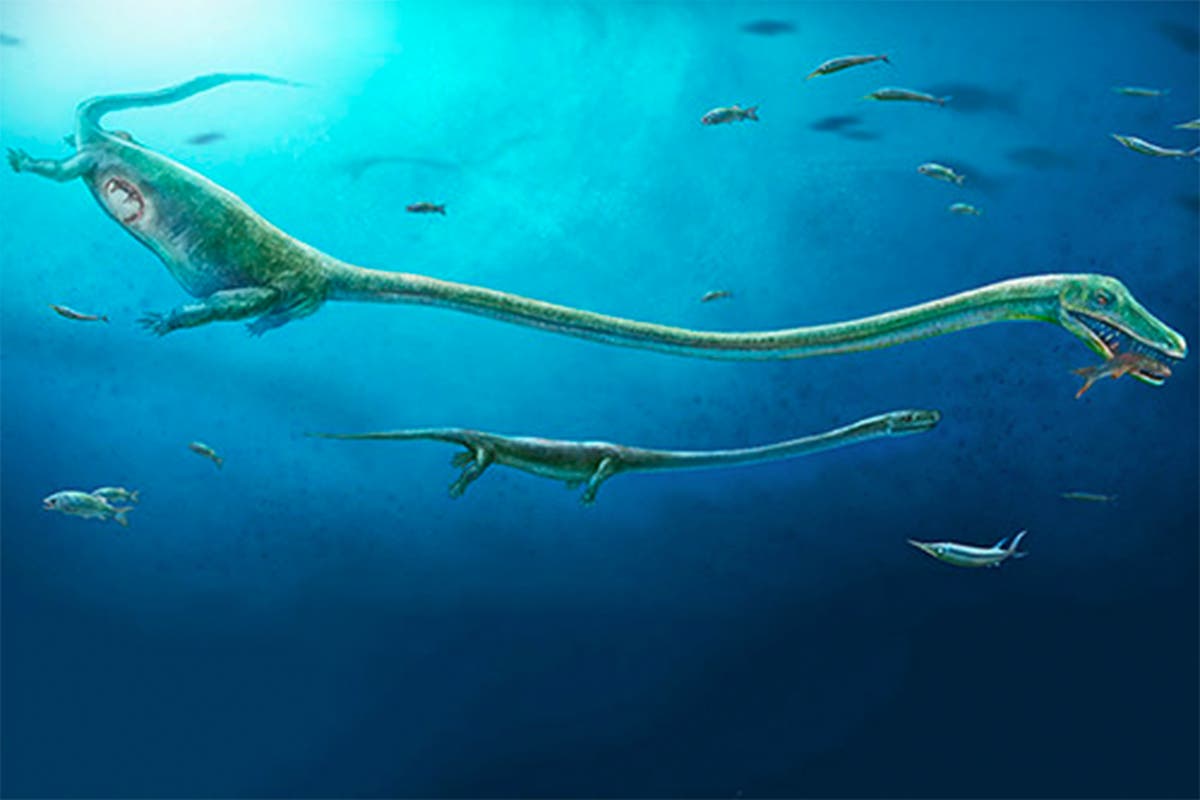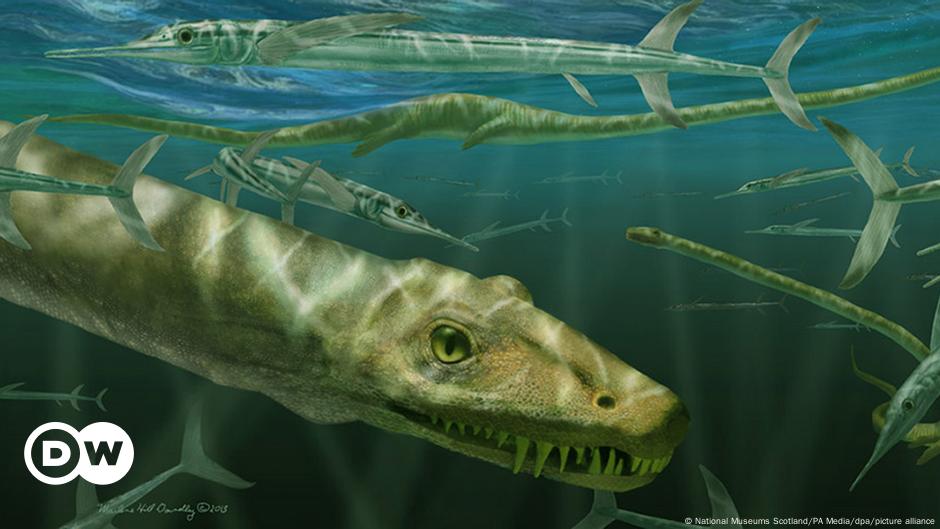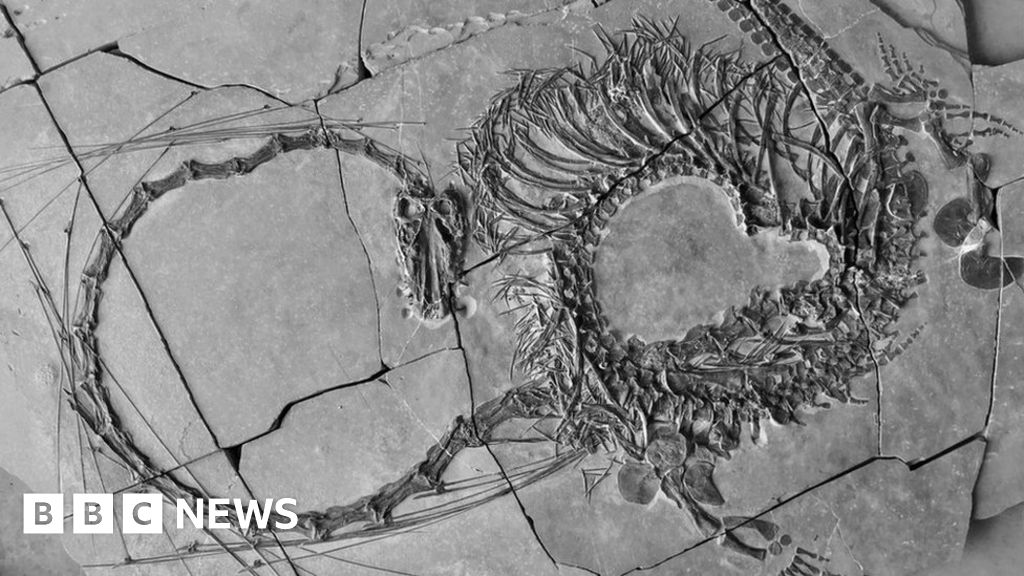Scientists have unearthed a fossil of an ancient marine reptile, Dinocephalosaurus orientalis, dating back 240 million years. Dubbed a Chinese dragon due to its extraordinary features.

Also Read: British Museum Facing Social Media Campaign to Return Rapa Nui Statues
The discovery, made in Guizhou Province, southern China, has provided researchers with an opportunity to study the complete anatomy of Dinocephalosaurus orientalis, shows its peculiar characteristics.
With its elongated neck measuring longer than its body and tail combined, and 32 separate cervical vertebrae, this prehistoric reptile presents a glimpse into the mysteries of the Triassic period.
Dr. Nick Fraser, part of the international team of researchers involved in the study, expressed excitement about this opportunity to examine the creature in its entirety.
He described Dinocephalosaurus orientalis as a very strange animal, addressing its flipper-like limbs and elongated neck as distinguishing features.
Speculation abounds regarding the advantages conferred by the reptile’s long, bendy, and flexible neck. Researchers suggest that it may have provided a hunting advantage, enabling Dinocephalosaurus orientalis to explore underwater crevices in search of prey.
The discovery of well-preserved fish in its stomach region reinforces the notion that this marine reptile was highly adapted to an oceanic lifestyle.
Comparisons with other marine reptiles, such as Tanystropheus hydroides, reveal similarities in size and skull features but distinct differences in vertebral count.
Dinocephalosaurus orientalis stands out for its greater number of vertebrae, giving it a more snake-like appearance.
Dinocephalosaurus orientalis is not closely related to long-necked plesiosaurs that emerged millions of years later.
This distinction dispels any notions of it being the inspiration for mythical creatures like the Loch Ness monster.
Also Read: Blinkerwall: 10000 Year Old Stone Age Wall Found at Bottom of Baltic Sea
The collaborative nature of this research, involving scientists from Scotland, Germany, America, and China, exemplifies the international cooperation necessary for advancing our understanding of Earth’s history.
Professor Li Chun, from the Institute of Vertebrate Paleontology and Paleoanthropology in Beijing, addressed the importance of this discovery within the context of other finds from the Triassic period.
Among the plethora of discoveries in Guizhou province, Dinocephalosaurus orientalis stands out as one of the most important specimens, offering valuable insights into ancient marine ecosystems.
The publication of this research in the academic journal Earth and Environmental Science, Transactions of The Royal Society of Edinburgh is a milestone in paleontological studies.
Dinocephalosaurus orientalis, initially identified in 2003, has remained in mystery until now. The recent discovery of additional, more complete specimens has allowed an international team of researchers to paint a picture of this enigmatic creature.
With its 32 separate cervical vertebrae and flippered limbs, Dinocephalosaurus presents an adaptation to an oceanic lifestyle, as evidenced by the well-preserved fish found in its stomach region.
Also Read: Evidence of Homo Sapiens in Northern Europe 45000 Years Ago Discovered
Dr. Nick Fraser, part of the team from National Museums Scotland, expressed excitement over the opportunity to observe Dinocephalosaurus in full for the first time.
Describing it as a very strange animal, Dr. Fraser said the peculiarity of its anatomy, particularly its elongated neck, which surpasses the length of its body and tail combined.
Speculating on the hunting advantages conferred by its flexible neck, researchers suggest that Dinocephalosaurus might have underwater crevices in search of prey.
Dinocephalosaurus is not closely related to the famous long-necked plesiosaurs that evolved millions of years later.
This distinction is important in understanding the evolutionary history of marine reptiles and dispelling myths surrounding creatures like the Loch Ness monster.
Over a decade of study at the Institute of Vertebrate Paleontology and Paleoanthropology in Beijing, researchers from Scotland, Germany, America, and China examined Dinocephalosaurus specimens, piecing together clues about its anatomy and lifestyle.
Professor Li Chun, from the Institute of Vertebrate Paleontology and Paleoanthropology, addressed the importance of newly discovered specimens housed at the Chinese Academy of Sciences.
Also Read: UN Report Finds Migratory Species at Risk of Extinction
























